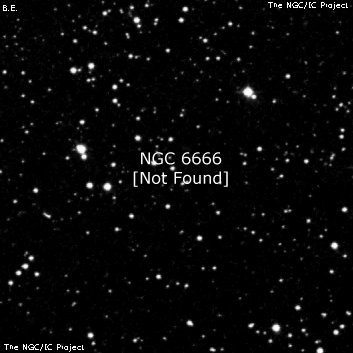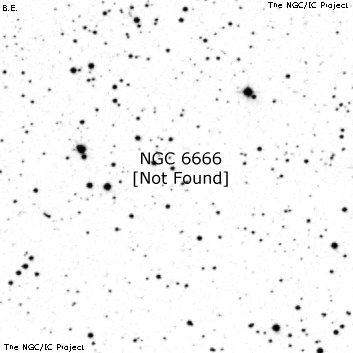NGC/IC Project Restoration Effort
(This is a very very beta version)
NGC6666


Basic Information
Location and Magnitude
Right Ascension: 18:34:44.0
Declination: +33:35:18
Constellation: LYR
Visual Magnitude:
Historic Information
Discoverer: Swift E.
Year of discovery: 1887
Discovery aperture: 16.0
Observational
Summary description: eF, S, R, v diffic
Sub-type: NF
Corwin's Notes
=====
NGC 6666 could be any of a number of galaxies within a degree or so of Swift's
position. It could also be UGC 11278 or UGC 11281 five degrees north.
Whatever Edward Swift saw, it is certainly not at the position his father
sent to Dreyer or later published.
Bigourdan's single observation a decade after Edward Swift's is for an
asterism of five stars, the brightest three in a line extending from northwest
to southeast. I don't think that this is likely to be Swift's object, but it
is a possibility. The asterism is 20 seconds east and 2.5 arcmin south of
Swift's position, but I don't think that it would match his description. This
could be easily checked, of course, with a 15-inch class telescope.
Jeff Corder did just that, but did not like Bigourdan's asterism any more than
I did. I looked again, and thought I had found a decent candidate,
CGCG 173-011, just one degree south of Swift's published position. It is
indeed "eF" and "S" -- but is certainly not "R". It is about 1.1 x 0.3
arcmin, much too flat to have appeared round to the Swifts. Also, it is
embedded inside, near the western edge, of a group of at least a dozen
brighter stars that the father/son observers would surely have commented on.
It might make a very pretty sight in a large telescope, but I doubt very much
that this is what Edward Swift found.



